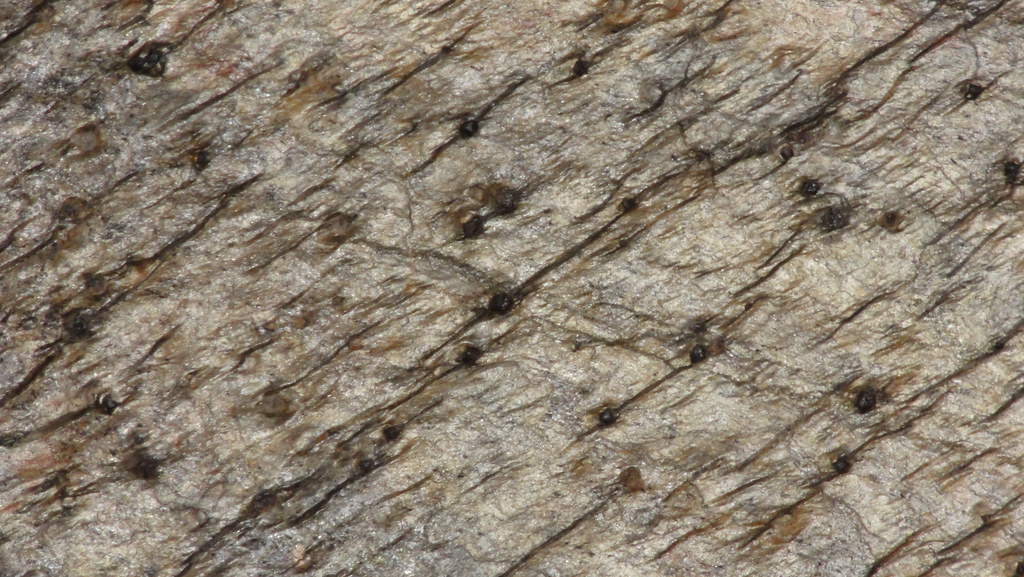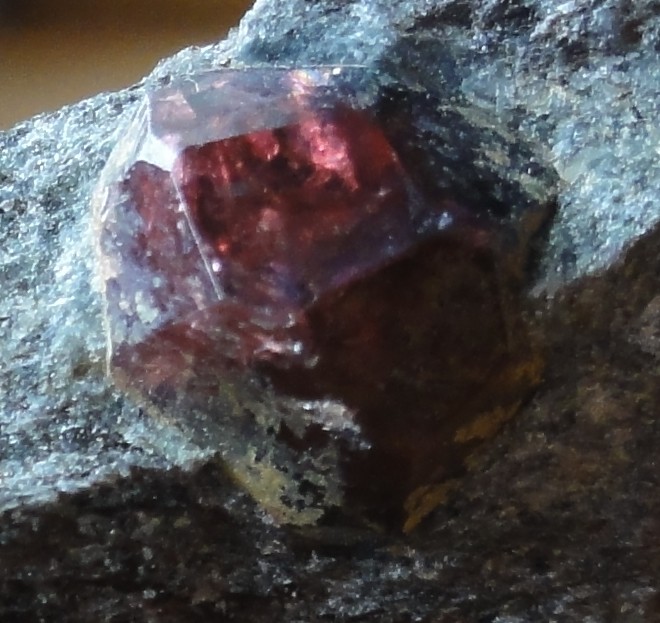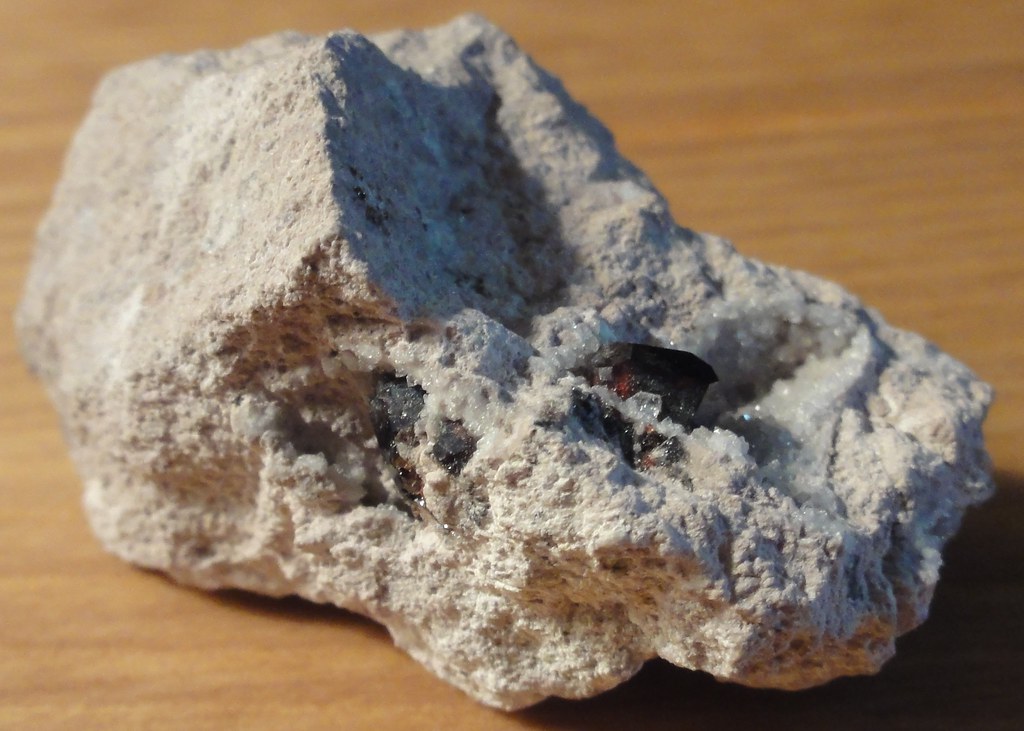 |
| Garnet schist tiles |
Here they are in context:
 |
| Tile strip |
So that led me to start asking what, exactly, is garnet schist all about? I know it's a metamorphic rock, and I know it's pretty. That about sums up my knowledge. So I threw the question out on Twitter, and got this reply from our own Ron Schott:
That sound you heard just then, rather like a blimp with a catastrophic failure in its air tanks roaring past at Mach 10, was nearly everything he'd said flying right over my head. There were words there I recognized. Problem was, I'd never seen them strung together like that. And Elli Goeke was off at a conference, so this really wasn't the time to turn to her and say, "Hey, Elli - my ignorance is total. Halp!"
This is one of those moments when one frantically turns to Google. Search "garnet schist," and you get bugger-all. Search something like "greenschist to amphibolite facies," and suddenly you're cooking with Sterno. Or possibly with vast tectonic forces.
I found Barrovian metamorphism.
I'll leave it to that link to explain in clear, succinct detail just what the hell that is. Basically, if you've got major tectonic excitement like a volcanic arc or an orogeny, you've got Barrovian metamorphism going on. In the context of our delightful garnet schist tiles, this gives us a recipe for their formation.
Let us begin with the garnets. What sort of garnets are we dealing with here? The Hudson Valley Geologist can point the way with this wonderful post on garnets. He says, "Almandine is the most common type of garnet and typically the garnet found in garnet schists." Almandine 'tis, then: we'll work on an assumption since the insurance company might get a tad upset if I dig up a tile to haul off to the lab. What's almandine, then? It's Fe3Al2(SiO4)3. So we've got iron, aluminum, silicon, and oxygen.
Right, then. Let us begin with a shale containing said elements. Maybe our tiles began life on a nice, quiet continental shelf, as clay particles and quartz and all that other stuff gently settled out of suspension and got compacted. It's nothing particularly special. Not yet.
Then, let there be an orogeny. Continents collide! Squish! Squeeze! Temperature and pressure rising! And something interesting begins to happen:
 |
| From shale to gneiss |
So what's happening? All that pressure-cooking is changing its mineral composition. At greenschist facies, the index mineral formed is chlorite. That mineral, in the absence of others formed under conditions of great heat and pressure, tells us just what sort of metamorphism our rocks have been subjected to. So far, so not schist. Until we increase the heat.
Now we're entering amphibolite facies territory. And things get very interesting indeed. We're cooking our former shale at temperatures of around 950-1200 degrees F (500-700 degrees C), and maybe we've buried it bit deeper. Our index mineral becomes amphibole. Here be schist - and possibly garnets.
 |
| Detail of garnet schist tile |
The ones in these tiles are fairly small. Look, I've even remembered to put a nickel in for scale!
 |
| Garnet schist tile, nickel for scale. I iz fotograffing domestick geology rite! |
Yeah. Yeow.
On top of that, only some of the minerals will act plastic. Some will remain brittle. But if you add water to the equation, you might get some melting at upper amphibolite facies. How exactly all that behaves under such extreme conditions is a question I'll have to leave to experts like Elli.
Whatever the details, ultimately, the rock's "soft" enough that those lovely little garnets don't get their style cramped as they form their faces. They laugh at the pressure. They bask in the thousand-degree heat. And, after millions of years of high-quality pressure cooking, you end up with something like my pride and joy, a gorgeous garnet embedded in schist:
 |
| Mah beautiful garnet in schist! |
 |
| So glad she didn't end her life as a floor tile |
 |
| Garnet schist tile with one thin dime for scale |
Remarkable.
As a special added bonus, here's another garnet I've got. In rhyolite, in fact.
 |
| Pretty in pink rhyolite |
Yes, garnets are opportunistic little buggers who believe an eruption's as good as an orogeny. But that's a story for another day...
(With special thanks to Lockwood and Ron, without whom I wouldn't have got a start and would have later ended up embarrassing myself. I'm still likely to have spectacularly screwed up somewhere along the way. Mistakes, misrepresentations, misunderstands, and general mis-es are my sole responsibility. You metamorphic petrologists in the audience are welcome to kick my arse, and corrections shall be made as necessary.)
*Okay, so nevermind. Let this be a lesson in the perils of not fact-checking the stuff you learned in grade school.








4 comments:
Actually stained glass doesn't flow appreciably over a hundred year time scale.
The myth comes from the fact that early window glass was made by spinning a blob of molten glass into a disc. The glass therefore was thicker towards the centre of the disc. Stained glass makers then inserted the glass panes with the thicker part towards the bottom.
I love it! I was reading it in the middle of giving an exam in intro geology, wishing you were one of my students. Keep up the great work!
Mmmmm, garnet schist! A few years ago while he was still alive, I served as my dad's driver and second set of ears for awhile. One day we visited a bank in his hometown, and I was nearly beside myself -- the counters were all garnet schist! Daddy, fortunately, had by that time accepted that his daughter would at times peer at rock-related things with an unfathomable intensity, and left me to my counter-scrutiny.
On the other side of the continent I've found the same floor in Charleston, SC. I was just as excited. After talking to the building management I found that they have no spare tiles for repairs or free samples. I WANT SOME. Someone is selling it. I bet they have samples. I'll let you know if I find some.
Post a Comment